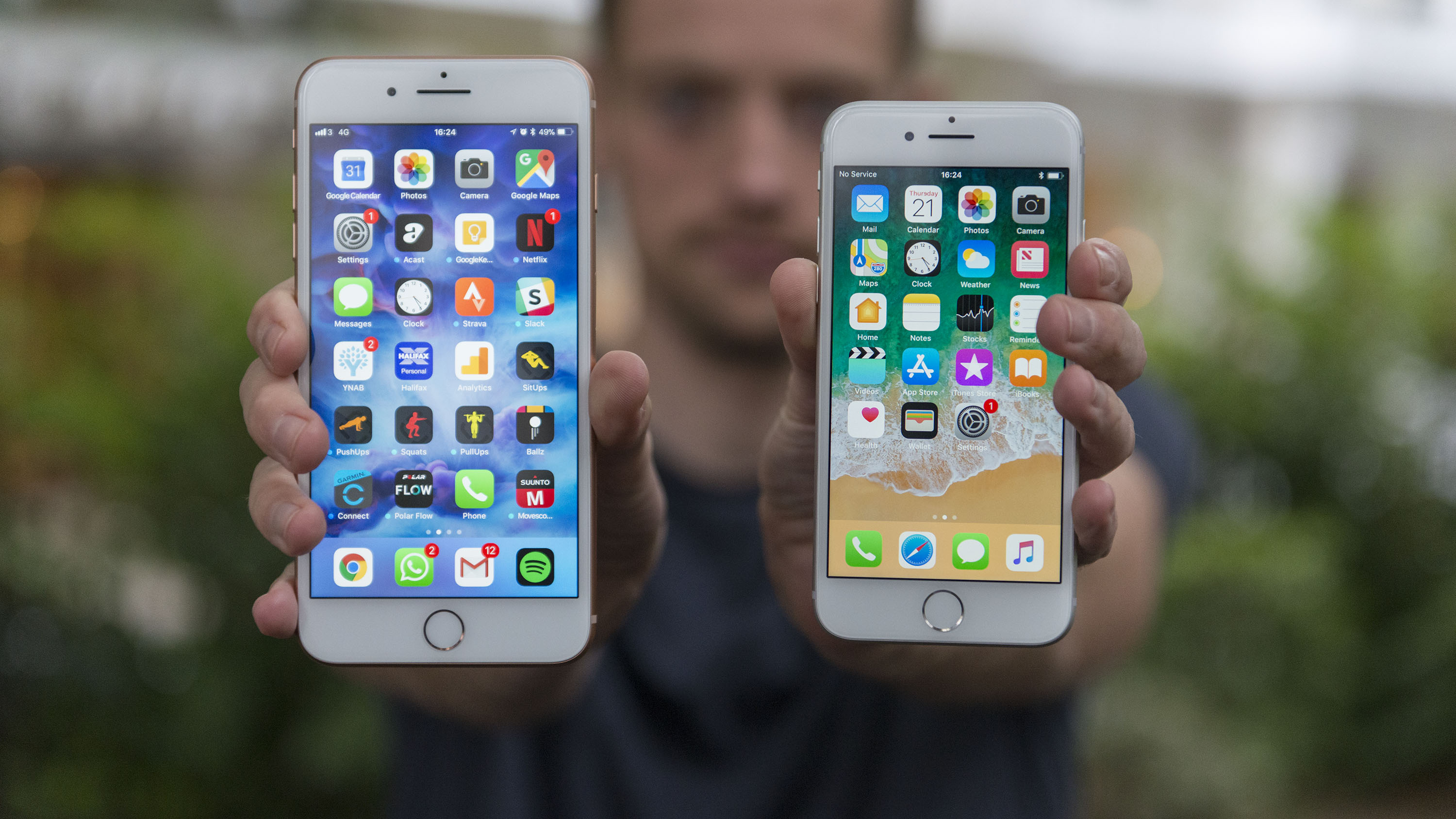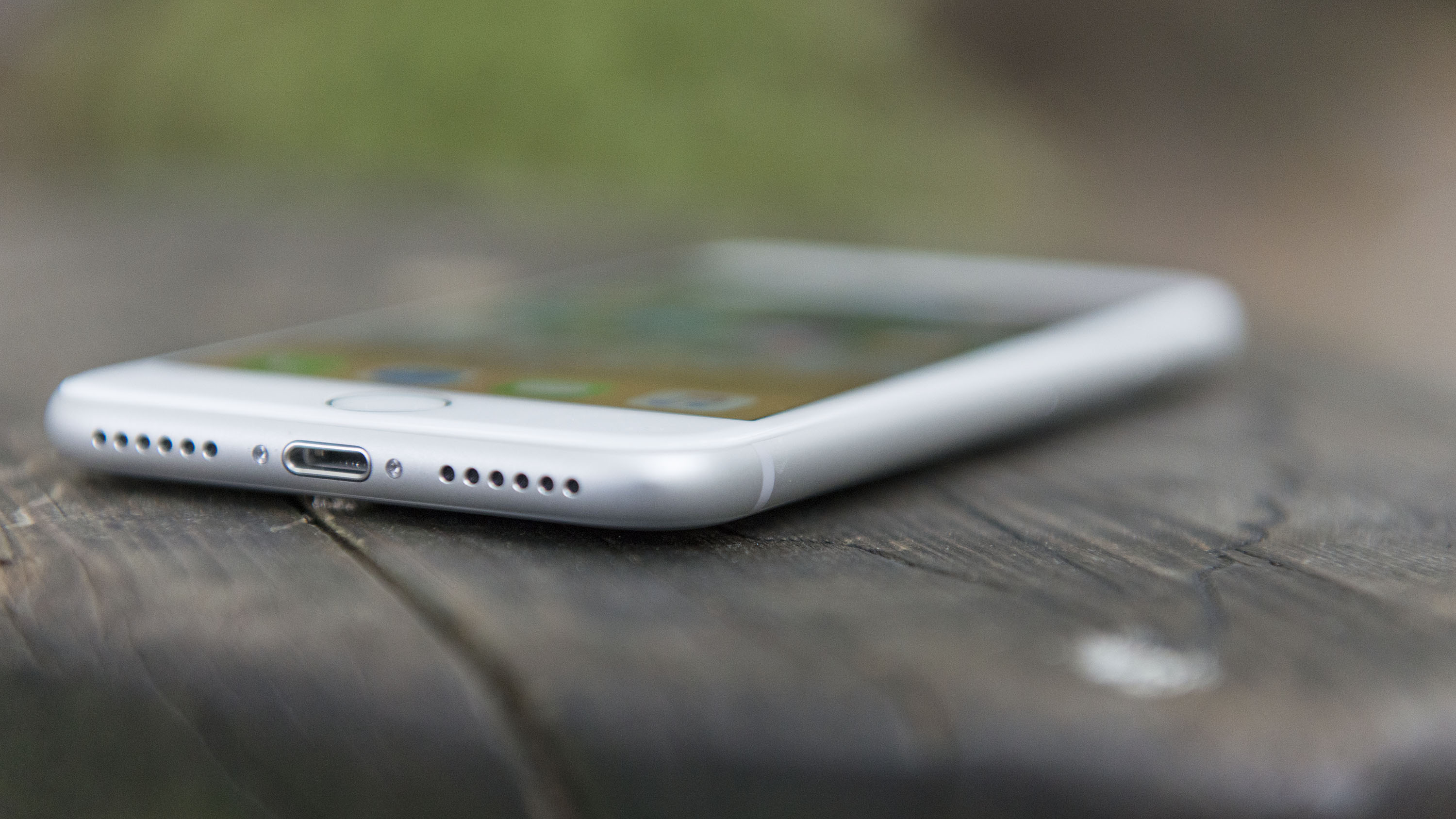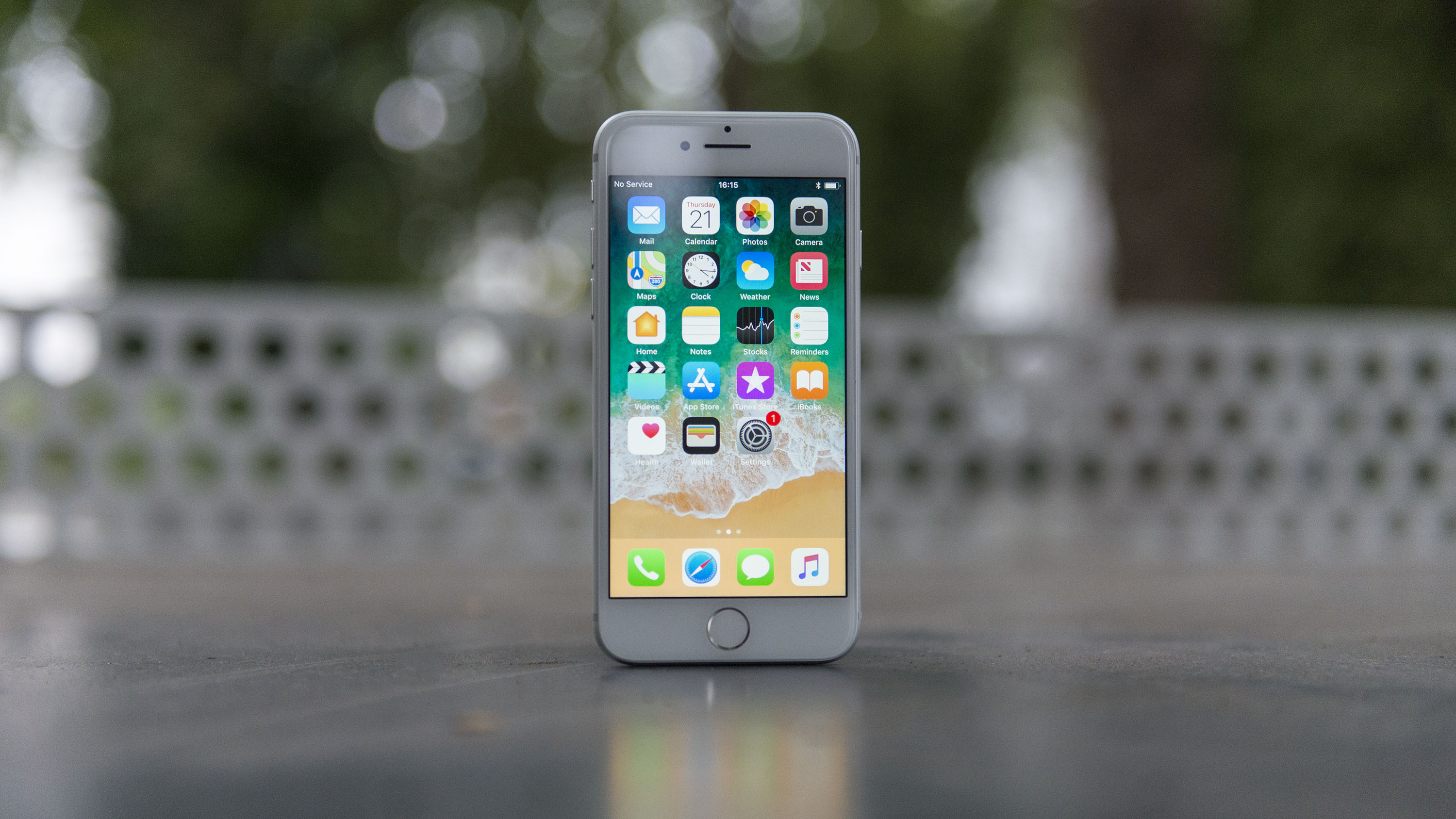Why you can trust TechRadar
The iPhone 8 arrived running iOS 11, giving you a refreshed Control Center that puts all your toggles on one screen, a merged notification bar and lock screen, and a number of tweaks under the hood.
It's since been updated to the new iOS 12 operating system though, providing better power management and the introduction of Screen Time which shows you how much you've used your phone, while giving you the option to help curb your usage.
In late 2019 it'll take another step up, to iOS 13, which will bring with it features like a Dark Mode and reinvented Find My Device, and the iPhone 8 is one of the oldest iPhones that'll be able to run it. Until then, you can enjoy all the cutting-edge features of iOS 12.
Smaller updates have also happened, bringing the iPhone 8 up to iOS 12.1.3 at the time of writing. This added extra emoji and a Group FaceTime mode.
The iPhone 8 also boasts Apple's A11 Bionic chip. It's the first time Apple has put a hexa-core processor (that's six cores) in its smartphones, and while it's obviously not as many as the octa-core offerings you'll find in flagship Android phones, it's a welcome step up.
That said, you’re unlikely to notice much of a difference on screen. Apps load promptly, games run smoothly, and multi-tasking is just as good as it was on the iPhone 7. We don’t have any grumbles with the performance of the iPhone 8, but don’t go thinking the A11 Bionic chip will give you a game-changing experience, simply because there’s not a lot of things you can do with the phone to really test with.
That said, it’s very capable when it comes to the heavier apps, and as such should continue to function slickly for longer than the iPhone 7, for instance. It’s also destructively strong in our benchmark tests, offering scores far in excess of anything we’ve seen before (and showing the real force at the heart of this iPhone 8).
We’re fans of the updated Control Center in iOS 11, putting key controls such as Wi-Fi, Bluetooth, music player and more a simple swipe away from any screen – and you can customize a selection of options in the Settings menu to ensure you only have the ones you use on display.

For all its plus points, though, iOS 11 (and iOS 12) still suffers from some of the core issues that have plagued the iOS platform for years.
The back button at the top-left of the display is not user-friendly for right-handed users on Apple’s larger-screen devices (ever since the upgrade from 4 inches it’s been trickier to hit), and with key app settings (such as camera controls) buried within the main Settings app, the OS remains frustratingly counterintuitive at times.
And this is not to mention all of the unintentional iOS 11 problems.
Apple Pay continues to be supported, enabling you to pay contactlessly at stores, transport hubs and other places that accept the technology, and it works in tandem with the Touch ID fingerprint scanner for online purchases from certain websites.
It saves you rooting around for your card, or filling in your card details every time you try to checkout online, and more importantly it works really well.

The headphone jack is still absent – anyone hoping Apple would bring it back after the outcry surrounding the iPhone 7 launch is sadly mistaken. It’s gone, it’s time to move on.
It means the only physical port on the iPhone 8 is the Lightning one on the bottom of the handset, and Apple includes a Lightning-to-3.5mm adapter in the box allowing you to plug in a set of headphones other than Apple’s own Lightning-connected EarPods, also included in the box.
Using the adapter does mean you can’t charge the iPhone 8 via a cable at the same time, or connect it to your Mac or PC – although the arrival of wireless charging potentially makes things a little easier.
AR you watching?
One of the big advances to arrive with iOS 11 is Apple’s push into augmented reality (AR). It merges the real world with the digital, via the display and camera on the iPhone 8, providing you with fun and unique on-screen experiences.
The feature isn’t exclusive to the iPhone 8 though, as along with the iPhone X and 8 Plus, AR also arrives on all other iPhones getting the iOS 11 upgrade.
It’s not a feature that will make you buy the iPhone 8 then, but the phone is potentially better placed than its predecessors for the future of AR on iPhone.
That’s mainly thanks to the brand-new GPU that Apple has included alongside the A11 chipset, providing (Apple claims) 30% better performance over the iPhone 7.
That means as AR experiences become richer and more demanding the iPhone 8 will have the power behind it to provide you with the best experience, while older handsets may start to struggle.
At this point, though, the iPhone 7 Plus performed just fine at loading ‘The Machines’, an AR game played through the iPhone, so AR is definitely something for the future.
For now, though, the core of AR apps in the App Store are relatively low-key – but there’s an impressive selection to choose from already, and it really shows the store’s strength in getting developers on board early with new technology versus Google’s Play Store.

At the time of writing there are over 20 games in the ‘AR games’ section of the App Store, offering a mix of free and paid-for entertainment. This number will only grow in the coming months as Apple continues to push iOS 11’s AR agenda, and encourages more developers to get onboard.
One of our favorites is AR Dragon, which brings the Tamagotchi idea into the AR era, with a little pet dragon that you look after, feed, pet, play with and watch grow.
It’s a simple game that’ll impress your kids as their little pet dragon appears on the coffee table at home, but while it’s fun for a short while it doesn’t quite have the longevity of other, non-AR games.
And for now that’s the problem. While AR is impressive, especially when it’s running on a device that can slide into your pocket, the experiences still feel a little cursory – you’re unlikely to have a long AR gaming session on the iPhone 8.
That could change in the next year or so as games develop and improve, but for now it’s a ‘nice to have’ rather than a ‘must-see’ feature.

TechRadar's former Global Managing Editor, John has been a technology journalist for more than a decade, and over the years has built up a vast knowledge of the tech industry. He’s interviewed CEOs from some of the world’s biggest tech firms, visited their HQs, and appeared on live TV and radio, including Sky News, BBC News, BBC World News, Al Jazeera, LBC, and BBC Radio 4.
